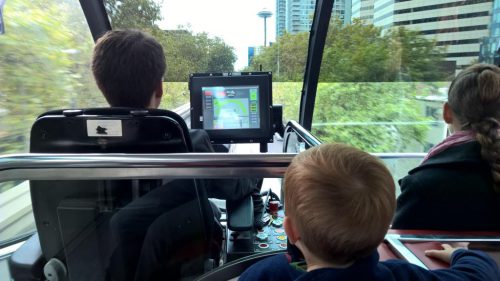 The Seahawks vs Cardinals game was a doozy. I’d say it was a defensive battle but it felt more like impotent offenses, at least on Seattle’s side. Regular time ended with a 3-3 tie so they went to overtime. Surely one time would be able to find a way to score a touchdown and put this game out of it’s misery? Nope. They both managed a field goal which meant that the next score would win the game. Seattle’s defense let the Cardinals march down the field in range for an easy field goal and… it hit the upright! The Seattle found some offense and marched down the field for an easy field goal and… wide left! AUGH! My old man heart can’t take this. The game ended with that 6-6 tie and that’s it. The Seahawks are now 4-1-1. Since the new overtime rules were introduced in 2012, this is only the fourth tie and it’s the first in Seahawks history. Meh. The bottom line is that the Seahawks better find a way to fix their broken offense because it looked horrible.
The Seahawks vs Cardinals game was a doozy. I’d say it was a defensive battle but it felt more like impotent offenses, at least on Seattle’s side. Regular time ended with a 3-3 tie so they went to overtime. Surely one time would be able to find a way to score a touchdown and put this game out of it’s misery? Nope. They both managed a field goal which meant that the next score would win the game. Seattle’s defense let the Cardinals march down the field in range for an easy field goal and… it hit the upright! The Seattle found some offense and marched down the field for an easy field goal and… wide left! AUGH! My old man heart can’t take this. The game ended with that 6-6 tie and that’s it. The Seahawks are now 4-1-1. Since the new overtime rules were introduced in 2012, this is only the fourth tie and it’s the first in Seahawks history. Meh. The bottom line is that the Seahawks better find a way to fix their broken offense because it looked horrible.
We had a crazy week in our league too with the top two teams (Logan and Andy) losing. There is now a three way tie for first place between Logan, Andy and Tim. Next week’s game of the week is probably Austin vs Andy. They’re both in the top 3 in the power rankings:
1. Logan
2. Austin (+1)
3. Andy (-1)
4. Dad
| This Week | Season | All-Time | |
| Highest Team Score | Ben had 132.53 | Logan had 170.69 (Week 5) | Tim 200.51 (2015) |
| Lowest Team Score | Andy had 97.18 | Tim had 77.09 (Week 6) | Andy had 41.29 (2015) |
| Biggest Blowout | Austin beat Luke by 33.01 | Logan beat Tim by 79.46 (Week 5) | Luke beat Andy by 113.02 (2010) |
| Closest Win | Tim beat Andy by 3.96 | Tim beat Dad by 0.45 (Week 4) | Jim beat Ben by 0.12 (2012) |
| Highest Scoring Player | Andrew Luck had 33.82 for Jim | Ben Roethlisberger had 43.90 for Andy (Week 4) | Drew Brees had 60.54 on Tim’s bench (2015) |
| Longest Active Winning Streak | Dad has a 2 game winning streak | Tim and Logan had 4 game winning streaks | Micah (2011) and Ben (2015) had an 8 game winning streak |
| Longest Active Losing Streak | Jim has a 4 game losing streak. | Jim and Dad had 4 game losing streaks | Kyle had a 14 game losing streak (2011) |










Church Speakers
Finally, it was time to upgrade. The only catch was that I had no idea how big of a system we really needed. I didn’t even know how to find speakers that would work with an amplifier. I spent some time learning about resistance, RMS, amplifier wattage, and how to pair an amp with speakers and made a wild guess.
We ended up with a QSC GX3 300 watt amplifier and two Mackie C200 speakers. The speakers are rated for 200 watts RMS and the amp can drive 300 with one of these speakers on each channel. The speakers are mounted to the wall with some simple, custom speaker boxes that I made with plywood, pocket hole screws and black paint.
Our church is roughly 75 feet long, 40 feet wide and 30 feet high at the peak. My hope was to get a system that would be at about 30% total power to get the right volume under normal conditions. I failed that, but the system is still a success. This setup is loud. When the church was empty, I got it turned up about 1/3 of the way and it felt like a rock concert. I seriously wonder if more power could blow out some windows.
So yeah, overkill. But you know what? It feels AWESOME to have a system that really works and isn’t straining to sort of meet our needs. We have had a lot of births in the last five years so church is a lot noisier than it used to be and it’s nice to have the ability to drown out the kiddie buzz if we need to.